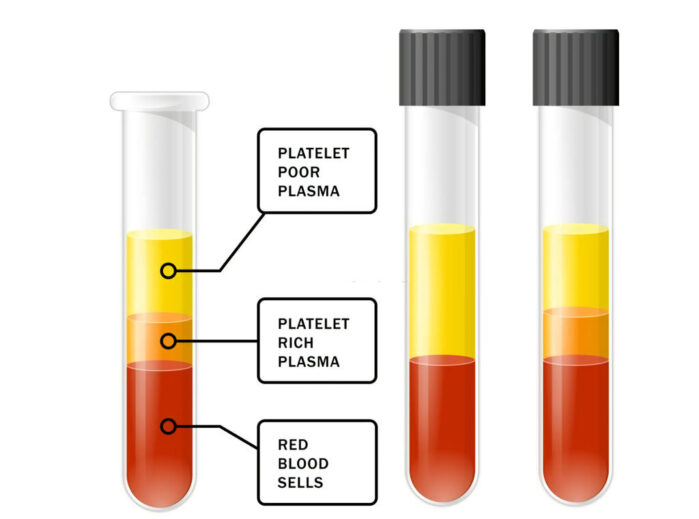Platelet rich plasma (prp)
Platelet rich plasma is a platelet concentrate extracted from whole blood by centrifugation and contains high concentrations of platelets, white blood cells and fibrin.
Activation of platelets releases a variety of potent growth factors, including PDGF, TGF, IGF, VEGF and EGF, of which more than 30 are found. These growth factors bind to target cell receptors through endocrine and autocrine modes of action, which in turn activate intracellular signaling pathways, induce mRNA transcription and synthesize various proteins required for tissue regeneration processes. At the same time, these growth factors form a complex regulatory network that works in synergy with each other to promote the regeneration of damaged tissue. Platelets and leukocytes play an essential role in the host’s anti-microbial biological response, helping the body to remove local pathogens and necrotic tissue. In addition, these cellular components contain antimicrobial peptides that are released in large quantities after activation by the application of thrombin and have not only endogenous antibiotic properties but also immunomodulatory effects, such as activation of natural killer cells and induction of interferon formation, which are innate and non-specific to the body. It is an important immune effector in the body’s innate non-specific immunity and can greatly enhance local resistance to infection.
PRP is autogenous and has no concerns about disease transmission, immune rejection, or the possibility that heterogeneous genetic products may alter the genetic structure of humans, and does not increase adverse reactions; 2. PRP contains a high concentration of various growth factors, and the ratio of various growth factors matches the normal ratio in the body, so that each growth factor has the best synergistic effect; 3. PRP can coagulate into a gel, which binds tissue defects and prevents PRP contains a large amount of platelets and leukocytes, which can remove local pathogens and local necrotic tissues and greatly enhance local resistance to infection; 5. PRP contains a large amount of fibrin, which provides a good scaffold for repair cells and also shrinks wounds, promotes clotting, stimulates tissue regeneration and promotes wound closure. Therefore, PRP can prevent and treat infections and accelerate the repair process of locally damaged tissues by mobilising the body’s own repair capacity and activating the immune defence system in two ways.
The successful development and application of PRP technology has solved a variety of complex clinical bone and soft tissue healing and tendon ligament repair problems, such as bone discontinuity, osteomyelitis; skin defects, difficult-to-heal wounds such as bedsores, venous ulcers, diabetic foot; arthritis, joint soft tissue injury also has significant efficacy; PRP accelerates fracture healing, promotes wound and tendon ligament repair, reduces intraoperative anesthetic dose, reduces intraoperative bleeding and intraoperative exudate. PRP also has significant effects in the field of plastic surgery.








